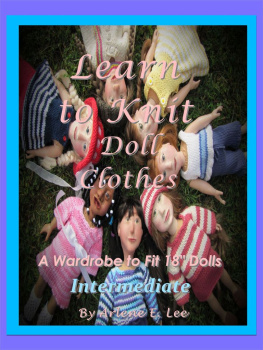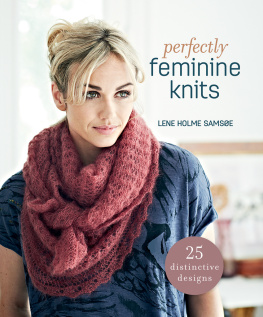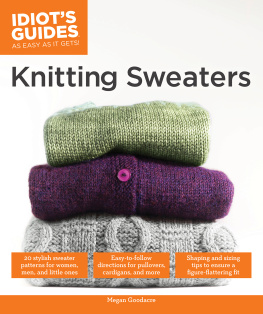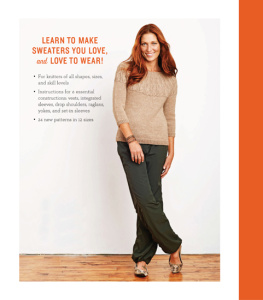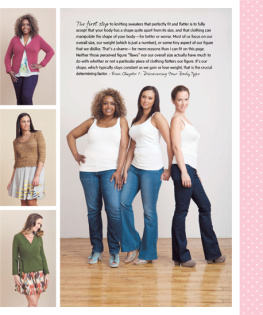Jacqueline Fee - Sweater Workshop, Sewn
Here you can read online Jacqueline Fee - Sweater Workshop, Sewn full text of the book (entire story) in english for free. Download pdf and epub, get meaning, cover and reviews about this ebook. year: 2002, publisher: Down East Books, genre: Home and family. Description of the work, (preface) as well as reviews are available. Best literature library LitArk.com created for fans of good reading and offers a wide selection of genres:
Romance novel
Science fiction
Adventure
Detective
Science
History
Home and family
Prose
Art
Politics
Computer
Non-fiction
Religion
Business
Children
Humor
Choose a favorite category and find really read worthwhile books. Enjoy immersion in the world of imagination, feel the emotions of the characters or learn something new for yourself, make an fascinating discovery.

- Book:Sweater Workshop, Sewn
- Author:
- Publisher:Down East Books
- Genre:
- Year:2002
- Rating:5 / 5
- Favourites:Add to favourites
- Your mark:
- 100
- 1
- 2
- 3
- 4
- 5
Sweater Workshop, Sewn: summary, description and annotation
We offer to read an annotation, description, summary or preface (depends on what the author of the book "Sweater Workshop, Sewn" wrote himself). If you haven't found the necessary information about the book — write in the comments, we will try to find it.
Sweater Workshop, Sewn — read online for free the complete book (whole text) full work
Below is the text of the book, divided by pages. System saving the place of the last page read, allows you to conveniently read the book "Sweater Workshop, Sewn" online for free, without having to search again every time where you left off. Put a bookmark, and you can go to the page where you finished reading at any time.
Font size:
Interval:
Bookmark:
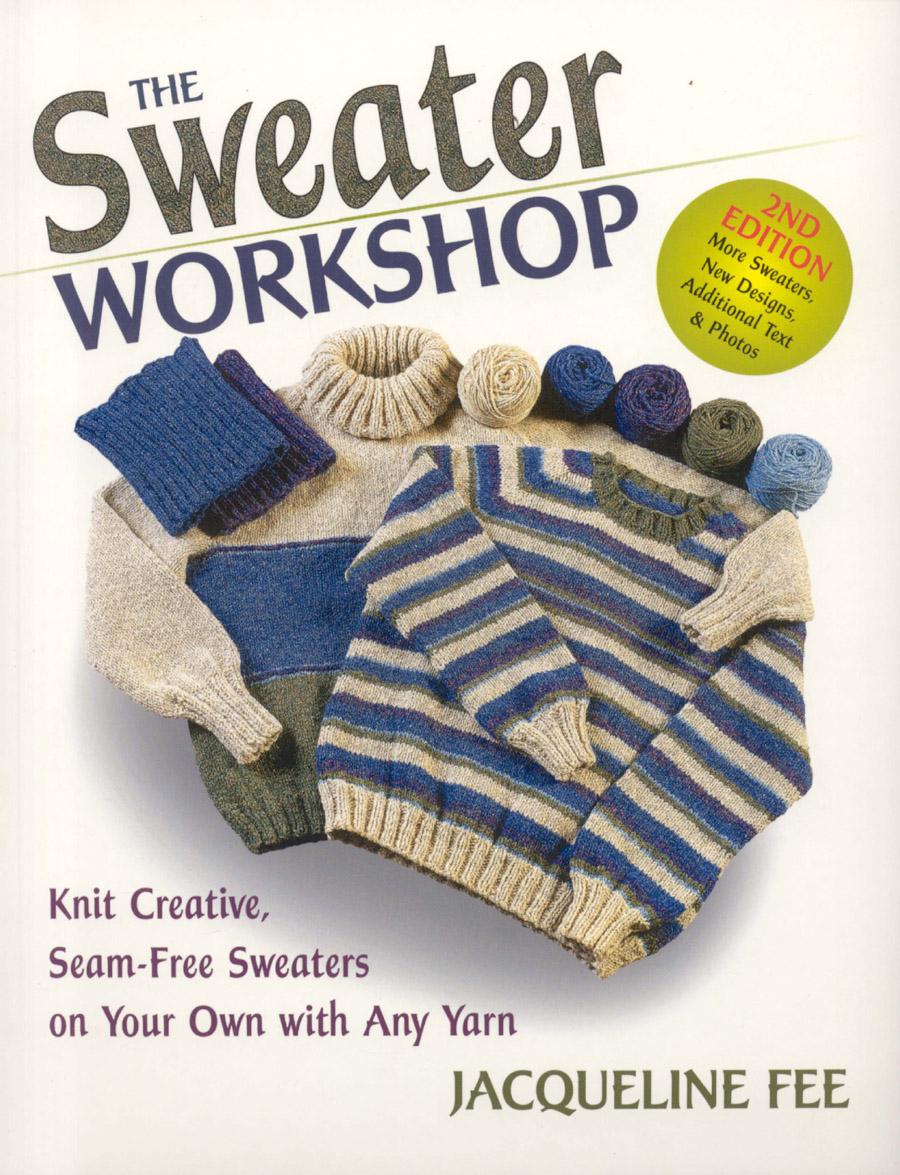
Copyright 1983, 2002 by Jacqueline Fee. All rights reserved.
ISBN 0-89272-533-8 sewn paperback binding
ISBN 0-89272-572-9 Wire-0 binding
Library of Congress Control Number: 2001097401
The excerpt on pages 6163 is from Knitting from the Top, by Barbara G. Walker. Reprinted 1996 by Schoolhouse Press. Used by permission.
All photographs by Lynn Karlin, except as noted below:
Photos on pages 73, 104, and 105 by Nancy Cook.
Photos on pages 139 and 143 by Thatcher Cook.
Page 84 photo from the Hamburger Kunsthalle in Hamburg, Germany. Elke Walford. Used by permission.
Page 85 photo reproduced by permission of the Museum of London Picture Library, image courtesy of Plimoth Plantation.
Photos on pages 87 and 88 reproduced courtesy of Smithsonian Institution Press.
Printed in China
RPS
7

Down East Books
P.O. Box 679, Camden, ME 04843
Book orders: 1-800-766-1670
www.downeastbooks.com
In memory of Elizabeth Zimmermann, for her enthusiastic encouragement, generous support, and very kind permission to include her inventions and unventions, to which I refer throughout
The Sweater Workshop.
May the treasury of her brilliance live forever through the hands of other knitters.
F irst, and still foremost, I must express a special thank-you to my daughter, Nancy, my very best friend and helpmate, whose ESP brings her to my side when I need one of her many talents. Nancy's love of early textiles and her pursuit of their reproduction filled our home with old looms and wheels and our lives with weavers and spinners. This association with true creators made me want to hide my knitting. It became suddenly unsatisfying and took on an air of inferiority. It seemed a copycat craft, akin to painting by numbers. The question began to nag: Why don't knitters knit as spinners spin, as weavers weave, or even as quilters quilt, as potters pot, as sculptors sculptwith a choice of materials and a few guidelines to follow? The answer? There were precious few guidelinesno book of blank stitches. You now have it: the bare bones, skeletons of sweaters to knit of any yarn and to embellish to your heart's content.
In memoriam, I also thank another Nancy, Nancy Latady, who was there to guide me through my first wheel turnings. I also am grateful to my handspun yarn itself, for not conforming to a prescribed gauge.
To Barbara Fairchild and Gloria Cohen for typing the rudimentary beginnings of The Sweater Workshop for my first classes. Subsequently, to the talented members of our South Shore Spinners Guildcollectively for energy and enthusiasm, individually for encouragement. And most grateful thanks to one particular talent in that group, Patricia LaLiberte, for her very special kindness in rendering the charming stitch illustrations.
Thanks also to Connie Pearlsteinmy devil's advocate on the West Coast since we met at Elizabeth Zimmermann's 1978 Knitting Without Tears Workshop at Shell Lake, Wisconsinand to Anne Gould, Jeanne Haviland, Marlies Price, and Toni Trudell, her counterparts in the East, for reading, testing, and commenting.
To Miriam Chesley and Linda Lincolnthank you for always listening, and to Linda also for her many years as my faithful booth assistant at the New Hampshire Sheep and Wool Festival.
I am indebted to every one of my students, those first adventurous sixDebby Blanchard, Pat Curtin, Jean Dionne, Carolyn McKenna, Kathleen Ouellette, and Elizabeth Reardonand all those who have followed. You are all here in the pages of this book. You were its inspiration.
To Linda Ligon, my former editor at Interweave Press, publisher of the first edition of The Sweater Workshop, for recognizing the need for an on your own knitting instruction book and for following through with its many printings.
And to the tens of thousands of knitters who have spread the words of The Sweater Workshop by recommending or giving the book to their friends, family members, and even strangers whom they may have seen with needles in their hands (in this category, I must thank former Rhode Island School of Design students Louise Vance and Ellen Longo, in particular). To those on the Internet's knit and spin lists who have praised the book's value via comments and e-mail.
To Carole Wulster, mathematical genius, who understands the depths of The Sweater Workshop book better than I and who put the text in Windows 3.1 for Linda Skolnik at Patternworks in Poughkeepsie, New York.
To Andrew Batt, at the Museum of London, and Jill Hall and Die Modlin Hoxie, at Plimoth Plantation, for the image of the 300-year-old knitted infant's vest that appears in the chapter titled Unravel Your Thinking.
To Neale Sweet, publisher, and the staff at Down East Books, and in particular to my editor, Karin Womer, for her warm, perceptive advice. I am deeply grateful for their faith and kindness in bestowing upon The Sweater Workshop a second life for those who have patiently awaited its return to shop shelves.
And again, to the rest of my family: always to my husband, Peter, for his thoughtfulness, help, and constant understanding; to our son, John, his lovely wife, Lynn, and our two precious granddaughters, Emily and Kayla, for their cheery good wishes; to Nancy's husband, Peter Cook, for his exuberant optimism, and, in memoriam, to dog Gus, for waiting all those minutes so many years ago.
Y ou will notice as you work your way through The Sweater Workshop that I avoided using the pronoun I. This reluctance, I believe, is a throwback to my very strict eighth-grade English teacher, a Miss Hough, who detested reading our elementary writings, as we were prone to start every sentence with I this and I that. This goal of no /s" was accomplished with two exceptions once in the Acknowledgments, for I was the one who had to thank my daughter for her significant role in my ending up writing a knitting book, and again in the Introduction, where I had to thank Elizabeth Zimmermann for her inspiration and permissionsno one else could speak for me in either case.
Invariably, in my workshops and lectures, someone asks how and when I started to knit, and I give a brief summary. So, here and now, I break my no I vow for you knitters who have not already heard the tale in person. Further, I was reminded of the value of my first project after a visit to Barbara King's shop, The Yarnwinder, on Newbury Street in Boston, for she had her beginnersboth male and female, I might addknitting socks in the round on four needles, exactly the way I had learned to knit too many years ago. And her students were having a lively, fun time of it.
I know my story starts the same way as many of yours. My introduction to the knitting process came in a Junior Girl Scout Troop in my hometown of Braintree, Massachusetts. We were working on our Textiles badges. Our leader, the late Mary Page, either deliberately or by chance, handed out four needles, a skein of blue yarn, and directions for spiral socks. To this day, I wonder whether I was blessed or cursed by this beginning: blessed because working with four needles became second naturethey became an extension of the fingersand, even more important, the spiral pattern of K4, P4 gave equal billing to the purl stitch. It wasn't a second-class stitch taking a back seat to the knit stitch. So many beginners start with thick yarn, big, fat needles, and a knit-every-row garter stitch scarf. Then, some weeks later, they hear, Oh, by the way, there is another stitch involved in this craft called knitting; it's the purl stitchand forevermore the purl stitch is treated as a pest, something to be tolerated and not enjoyed. As a right-hand knitter, i.e., one who holds the working yarn in her right hand, I love the purl stitch and on occasion will work a sweater on the purl side then turn it knit-side out.
Next pageFont size:
Interval:
Bookmark:
Similar books «Sweater Workshop, Sewn»
Look at similar books to Sweater Workshop, Sewn. We have selected literature similar in name and meaning in the hope of providing readers with more options to find new, interesting, not yet read works.
Discussion, reviews of the book Sweater Workshop, Sewn and just readers' own opinions. Leave your comments, write what you think about the work, its meaning or the main characters. Specify what exactly you liked and what you didn't like, and why you think so.


